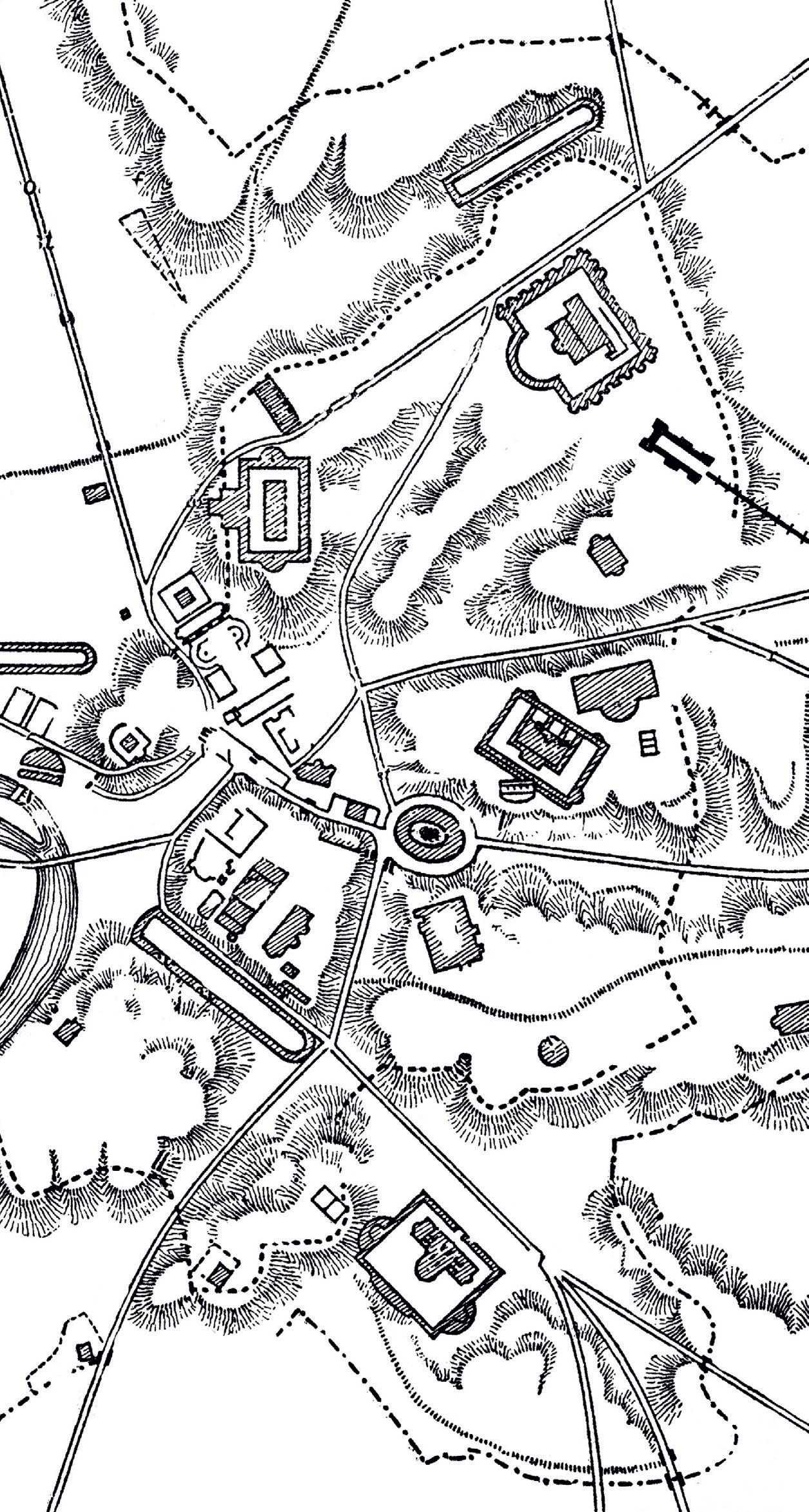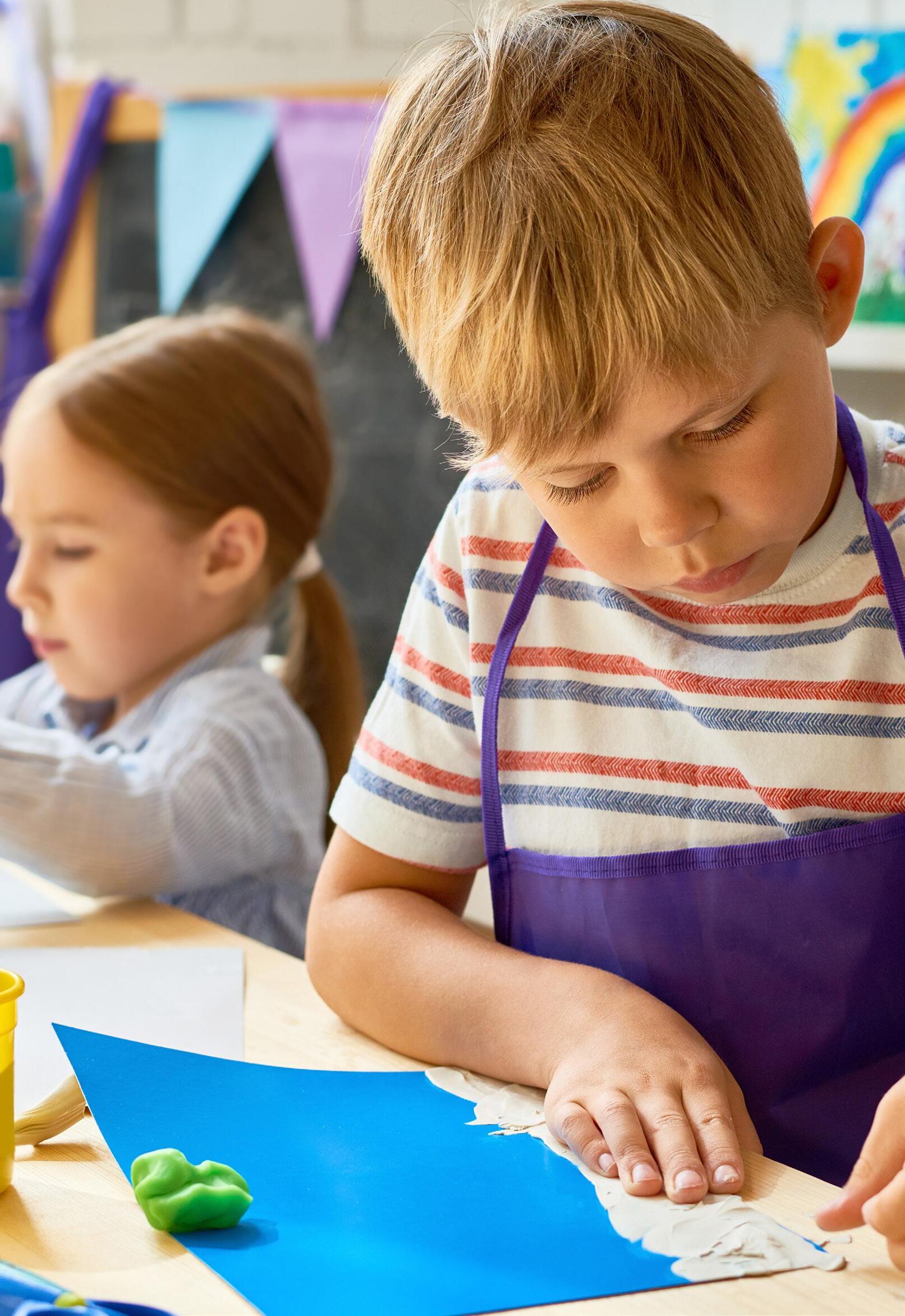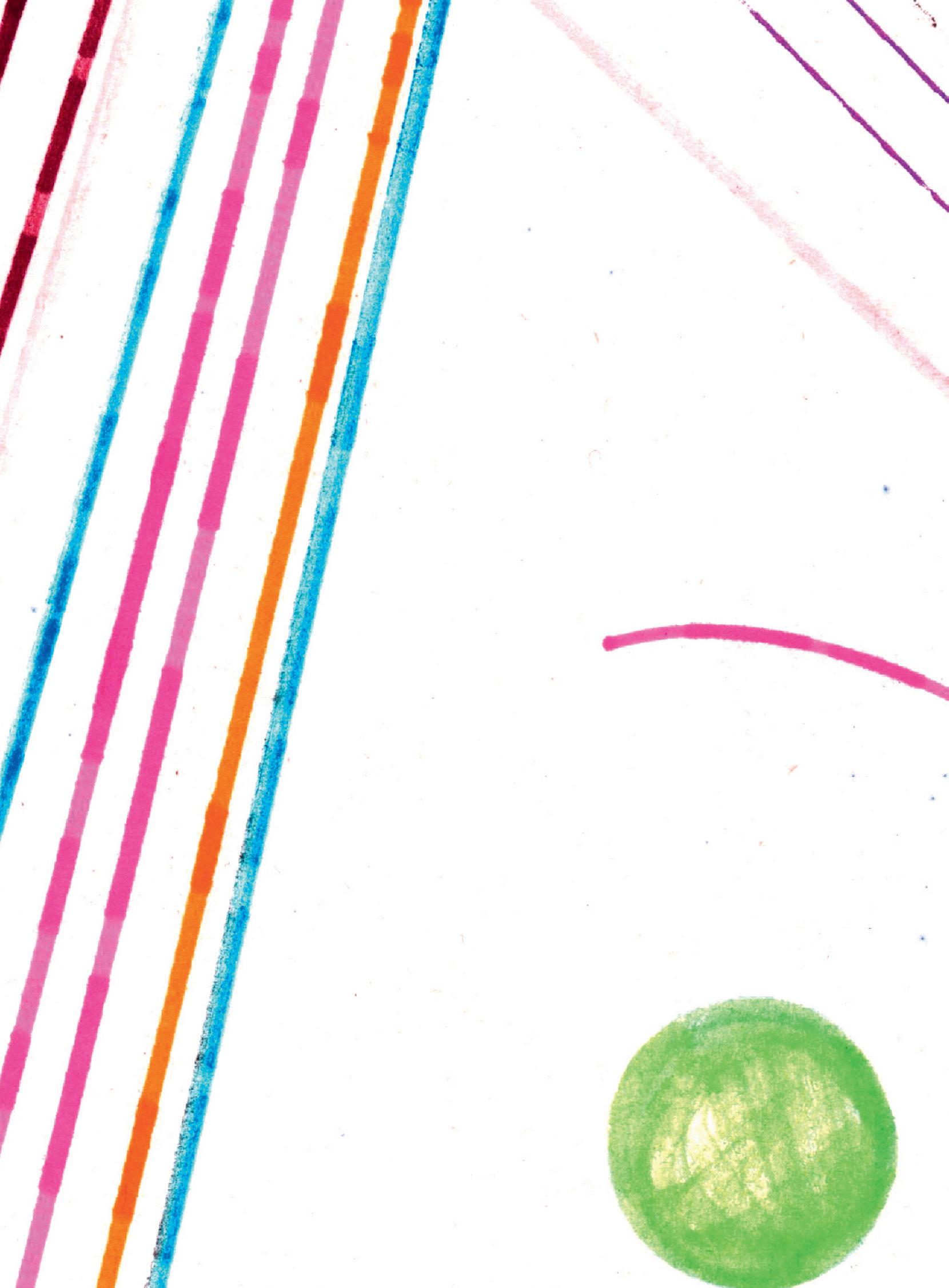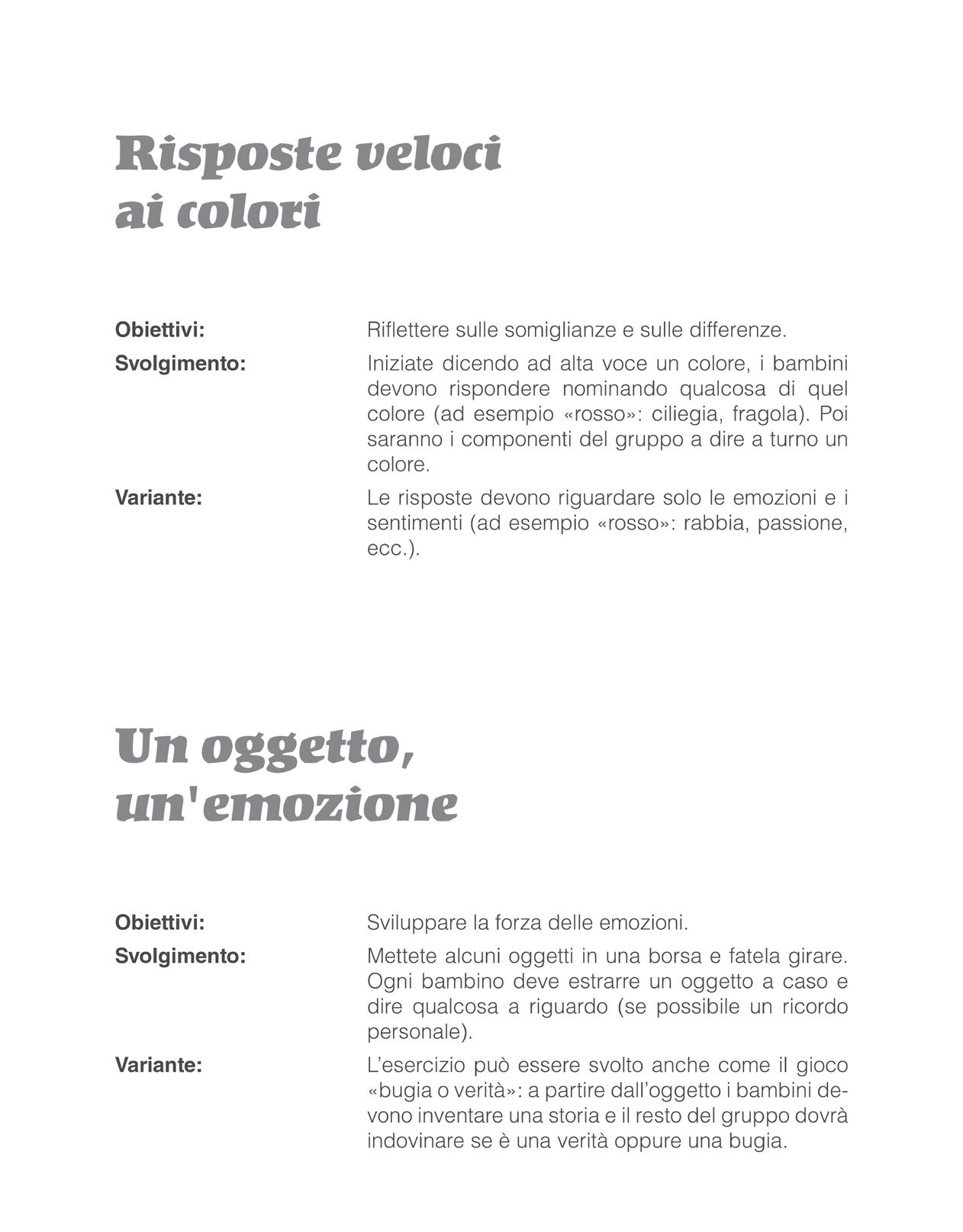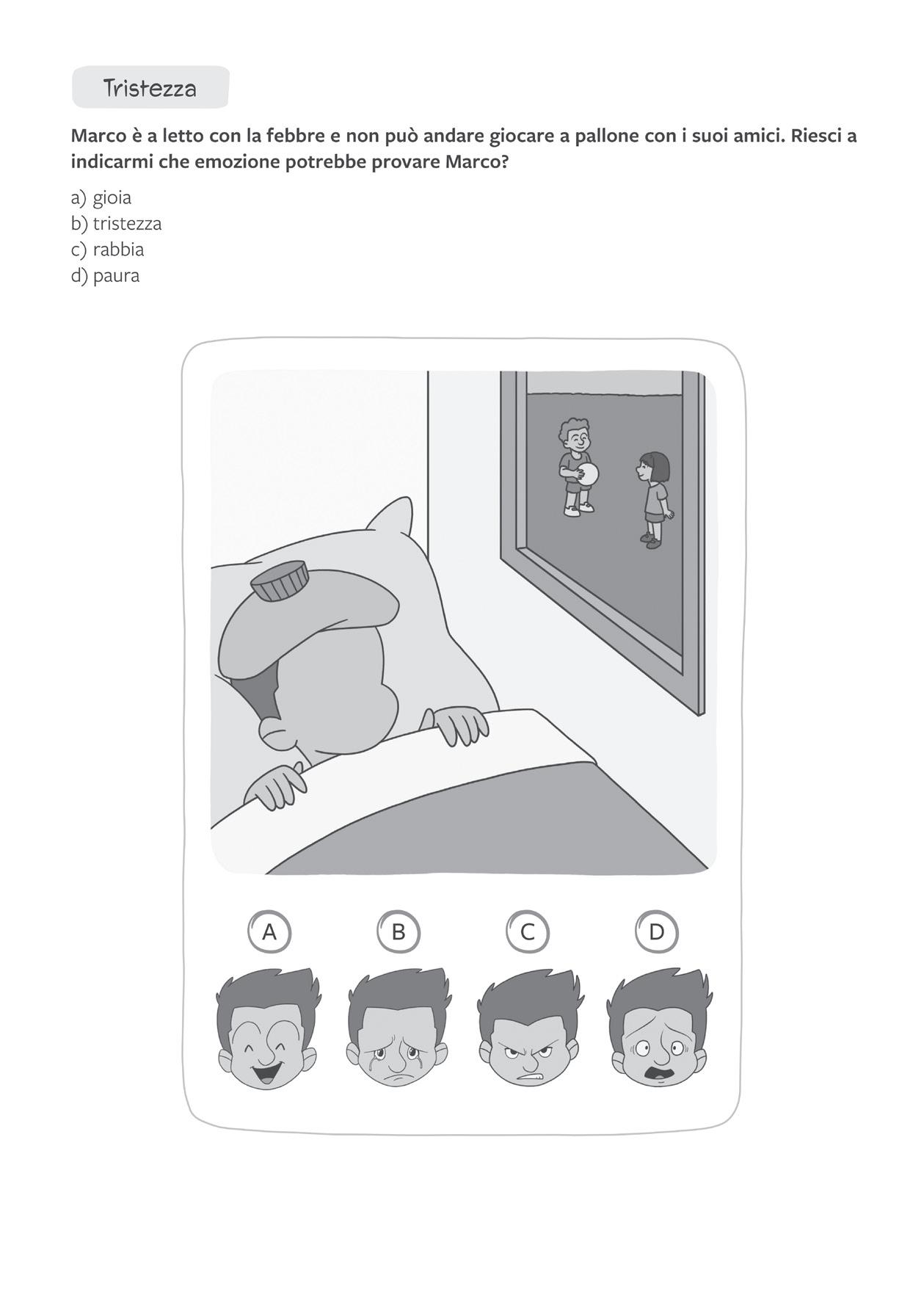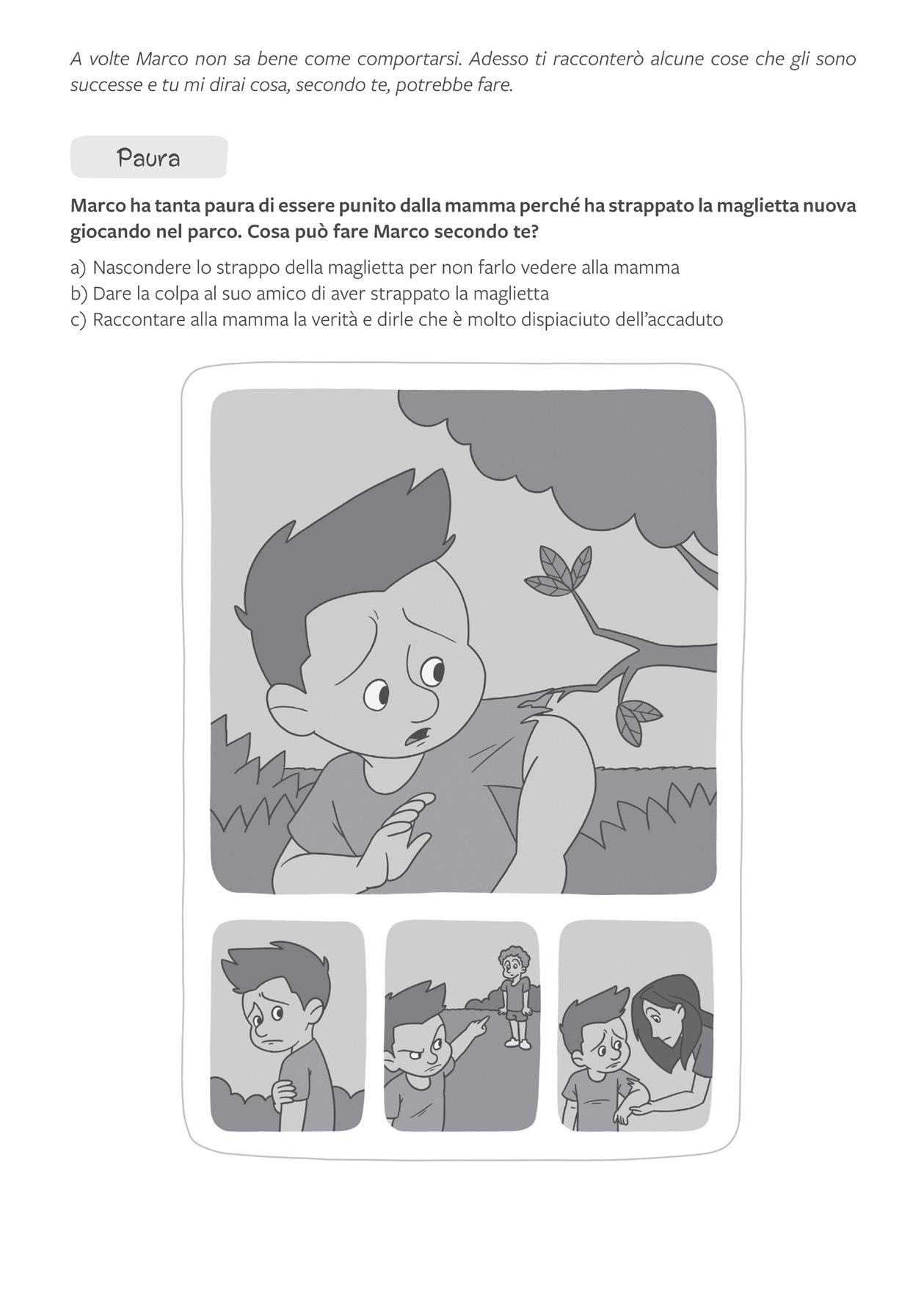IEP in practice at Kindergarten
Operational materials and activity proposals
By Dario Ianes, Sofia Cramerotti e Flavio Fogarolo
MATERIALS DIDACTICS
RELATIONSHIP DIMENSION, OF INTERACTION AND SOCIALISATION
Areas
Affective-relational sphere and area of the self (p. 78)
Relationship with others (p. 83)
DIMENSION OF RELATIONSHIP, INTERACTION AND SOCIALISATION
A number of operational worksheets relating to this dimension are proposed here for the four areas of interest:
1. Affective-relational sphere and area of the self
2. Relationship with others
3. Motivation towards relationship and learning
4. Peer group and interactions with reference adults in the school context.
Specifically, we are going to work on the aspects outlined in the table below. Although the sheets are subdivided in relation to specific areas of work, they are to be understood and used with a view to transversality, mutual complementarity and close interconnection with the main reference dimension.
Objectives/goals
Developing emotional competences and promoting well-being
Recognising emotions
Learning respect for oneself and others
Enhancing self-esteem
Learning to communicate your own emotions
Knowing how to deal with anger
Relating with others to ge to know each other better
Working on collaborative tasks and listening to each other
Motivation towards relationship and learning (p. 90)
Peer group and interactions with reference adults in the school context (p. 96)
Consolidating the concept of friendship
Cooperating among peers to get to know each other better and compare notes
Learning to learn
Maturing a sense of personal efficacy
Fostering cohesion in the class group
Fostering the expression of personal personal
Developing relational skills
Promoting welcoming and sharing behaviour
Promoting peer conversations and interactions
Evaluate and self-assess peer interaction (proposal aimed at teachers)
Boards
1. Words of happiness
2. The power of emotions
3. My emotions
4. Respect for oneself and others
1. Communicating emotions
2. Managing anger
3. Getting to know each other
4. Collaboration and listening
1. Friendship
2. Playing cooperatively
3. My plan for learning
4. The expert tag
1. Joining a group
2. Learning to share
3. Promoting conversations 1
4. Promoting conversations 2
Video by Marco Pontis
1
Target age
This activity was conceived for children from 3 to 7 years old
Goal
the proposed activity aims to stimulate the expression of the emotion of happiness through the use of verbal expressions and to enrich the emotional vocabulary
Materials
video camera or audio recorder
Activities
each child is asked to express the emotion of happiness in words. the adult then uses some stimulus questions to foster group conversations between children about the verbal expressions that have emerged and their meaning
Stimulus questions
When you are happy, what words do you use? How many ways do you know of to express happiness in words? Have you heard any new words today?
How to conclude the activity
Conclude by summarising what emerged during the activity on the verbal expression of the emotion of happiness and taking up the emotional vocabulary terms related to happiness
Quick answers to colours
Goals:
Proceedings:
Variant:
Reflect on similarities and differences. Start by saying one colour out loud. The children must respond by naming something of that colour (e.g. redcherry; strawberry). Then the group members take it in turns to say the name of a colour. Answers should only relate to emotions and feelings (e.g. red - anger, passion).
An object, an emotion
Goals:
Proceedings:
Variant:
Developing the power of emotions. Put some objects in a bag and pass it around. Each child should take out an object at random and say something about it (if possible a personal memory). The exercise can also be played as the ‘lie or truth’ game: starting with the object, the children have to invent a story and the rest of the group has to guess whether it is a truth or a lie.
Barber, Creatività
emotivo, Trento, Erickson
MY EMOTIONS
Sometimes Marco doesn’t really know how to behave. Now I’ll tell you some things that happened to him and you tell me what you think he could do.
Fear
Marco is so afraid of being punished by his mother because he tore his new shirt playing in the park. What can Marco do in your opinion?
a) hiding the tear in the shirt so his mom won’t see it
b) blaming his friend for tearing his shirt
c) tell his mother the truth and tell her that he is very sorry about what happened
M. Di Pietro
Lupo, Conosco
www.erickson.it

